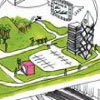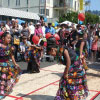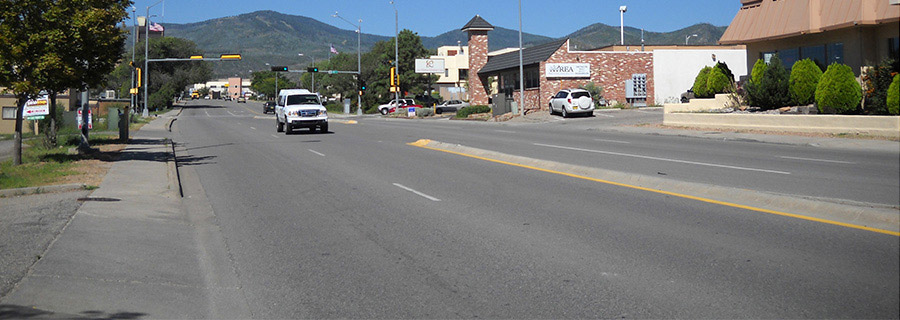
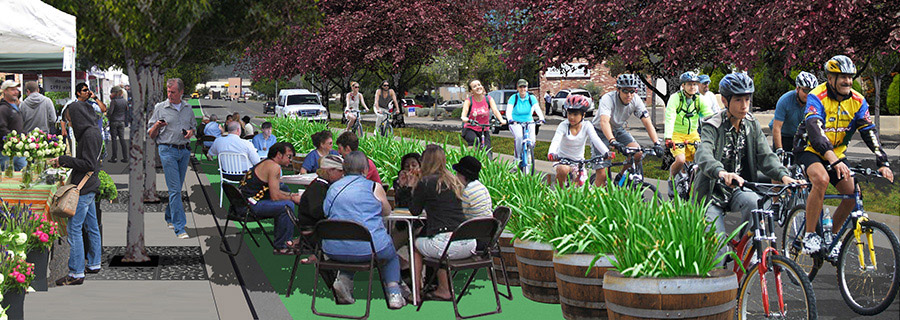
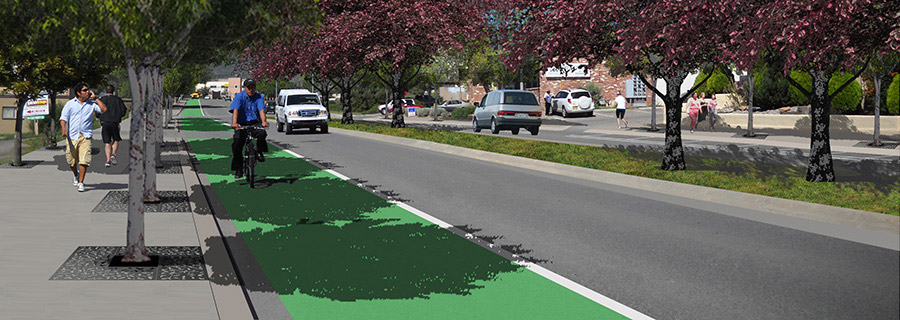
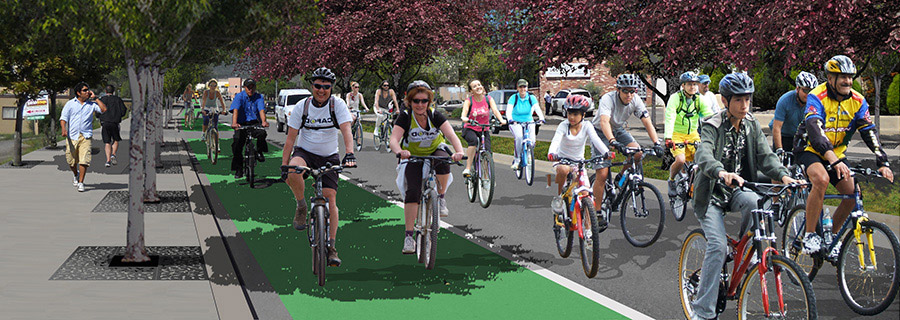

Events and programs are a system of shared, community-based services, opportunities, events and projects designed to meet social needs. The temporary use of streets for special events and programs has been a long tradition in cities worldwide. Most cities’ recreation providers offer cultural festivals, fairs, performing arts and other events and celebrations, and many of these take place on community streets[1].
Events and programs range from informal, low-key, spontaneous street performances to elaborate festivals or parades that require extensive planning and rerouting of vehicle traffic. They can be smaller, neighborhood-based gatherings generated from a grass roots effort or be larger events organized and sponsored by city agencies. Events intended to promote healthy living and alternative uses of streets called “open streets” (ciclovias) have become popular in cities around the world. During these events vehicle traffic is prohibited on specially identified routes for prescribed days throughout the year to allow streets to be occupied by pedestrian and bicycle activities.
Events and programs are as numerous as our unique communities. They can occur with various frequencies – once, periodically, annually, or daily – and can make use of closed, partially closed or even open streets. For some events, minimal supporting infrastructure is needed although permanent elements, such as power and lighting, accommodate a wider range of activities.
Why Hold Street Events and Programs?
Events and programs bring together people of all ages, incomes and cultures to connect and interact thereby building and reinforcing community identity. There are also opportunities for significant economic benefit from revenue generated by sales of food and goods for events’ sponsors and the neighborhood in which they are held.
Special events introduce people to new experiences such as international cuisines and music. Events like street games, races, walks and bike rides provide an opportunity for physical activity. Culturally themed festivals can increase understanding of diverse cultural groups in the community.
[1] According to the National Park and Recreation Association (NRPA), about 90% of recreation providers provide performing arts, cultural festivals and community events (NRPA, 2009).
Street events and programs can address the following overall goals:
- Enliven and activate street environments.
- Create small and large scale, spontaneous and periodic, physical, social and educational opportunities.
- Impart unique identity and help brand the street.
- Celebrate the city and its neighborhoods, the community’s values, cultural diversity, people and accomplishments, holidays, etc.
- Build social capital.
- Enhance economic development.
- Showcase and promote re-emerging neighborhoods and business districts.
- Create new reasons to visit the street and adjoining businesses.
- Provide opportunities to fulfill basic community needs, such as convenient access to healthy food, active recreation, affordable entertainment, cultural expression, etc.
- Allow diverse use of the space usually devoted to automobile transportation.
Street events and programs may include the following activities:
- Performing
- Parading
- Celebrating
- Demonstrating/protesting
- Observing/listening
- Dancing
- Standing
- Running/walking
- Biking
- Sitting
- Eating and drinking
- Selling and buying
The wide variety, diversity in scale, and temporal nature of these events and programs allow streets to be constantly reconsidered and repurposed to meet changing social needs and desires. The following is an initial list of some of the common types of street events and programs that exist in cities today:
- Neighborhood block parties
- Play streets
- Public/farmers’ markets
- Open streets events (Ciclovia)
- Street fairs and festivals
- Musical events (small- and large-scale)
- Progressive events
- Parades
- Races/walks
- Demonstrations/marches (formal and informal)
- Street performances or busking (formal and informal)
- Exercise programs
- Interpretive programs
- Meet-ups
Each of these events is described in more detail below.
Neighborhood Block Parties
Neighborhood block parties are usually small-scale events in which a single block is closed to vehicular traffic. Neighbors gather in the street to barbeque, play games, have fun and build community. These parties often coincide with special events or holidays, like the 4th of July or Labor Day in the US, or are scheduled as annual neighborhood events. In the UK, block parties are known as "street parties" and often take place on national holidays. Neighborhood organizations generally plan and host these small events and following guidelines set forth by local municipalities.
Play Streets
Play streets are programs organized by municipalities or nonprofit groups. Roads are temporarily closed to provide safe, free, supervised play opportunities on scheduled dates. Informal play street programs may also be instituted by local communities who agree that streets will be prioritized for play during certain hours or on certain days. Formal play streets programs generally occur on closed streets, but the shared use of streets for play when accompanied by public awareness efforts has also been successful.
Public Markets/Farmers’ Markets
Public or farmers’ markets allow farmers and other vendors to sell products directly to consumers. While some well established farmers’ markets occupy permanent facilities, most take place seasonally on a periodic basis in streets or parking lots that are temporarily closed to traffic. Regulated by the operating rules of local governments or nonprofits who generally manage the markets, vendors often set up tents, carts or stands for selling their goods. Some farmers’ markets limit their scope to producer-only farm vendors, while others allow a range of products and services to be sold. In addition, some markets take on a festival atmosphere by providing live entertainment and other activities.
Open Street Events (Ciclovias)
Open street events, or a Ciclovía Recreativa, involves temporarily closing streets to motorized vehicles to create a safe and free space for recreational and sports activities. The event is held regularly on a fixed day of the week (usually Sundays, and sometimes on holidays) or on designated days during the year during specified hours.
Street Fairs and Festivals
Street fairs and festivals are public events that focus on specific themes (art, music, food etc.) or celebrate particular neighborhoods, or social or cultural groups. They can range in scale from large, multi-day, ticketed events to small-scale celebrations that last a few hours and extend along one or two closed blocks. Both fairs and festivals often include vendors who offer a range of food, products and services.
Small and Large Scale Musical Events
Musical events (small and large-scale) provide a showcase for local musicians and groups. Ticket-free events allow easy attendance by all, including those who just happen upon an event or who may drop-in and listen for a short time. For large-scale events, typically streets are closed, and street vendors selling food and drink are located close-by.
Progressive Events
Progressive events provide a series of destinations where a program theme can be experienced and interpreted. Examples include art walks; tours of home gardens or historic properties; a series of music or theater venues; progressive food events; and tours, such as agricultural tours, and tours of green buildings and backyard chicken coops. Event locations can be selected to encourage active modes of transportation, such as walking or biking between venues. These events can feature selected business districts or neighborhoods. They can increase awareness of cultural or environmental topics, and raise funds for organizations. Sometimes walking tour maps are provided at various locations along the way. Often other entertainment, such as theater or music performances, and refreshments, are offered in addition to programs related to the selected theme. If the event occurs in a business district, local businesses and restaurants are frequently open to serve participants.
Parades
Parades are themed processions along a designated route. It often includes costumes and music, and sometime decorated floats. Parades are held for a wide range of reasons, but are usually celebratory in nature. Parades may be held as one-time events that honor special people or mark important achievements, or may be annual community traditions.
Races/Walks
Races and walks are athletic events held on measured road courses that are temporarily closed to vehicular traffic. While some events are competitive in nature and attract elite athletes, others are primarily intended to raise awareness or funds for charities or causes. Races and walks often promote a festive atmosphere along the course as crowds gather to cheer on athletes. Many races incorporate venders and performers into post-race celebration events.
Demonstrations/Marches
Demonstrations and marches are organized gatherings or processions for the purpose of expressing group sentiment about an issue or cause. Event organizers may choose to obtain official permits which are often required by municipalities or to convene as an act of civil disobedience.
Street Performance or Busking
Street performance or busking is the practice of performing an act of entertainment on the street often for the purpose of earning tips. Street performances can include musical, theatrical, comedic or acrobatic components. Buskers may perform individually or in groups. Acts may be designed to draw large crowds for an extended performance or may simply provide passing entertainment for people as they walk by.
Exercise Programs
Exercise programs can be organized for groups or individuals. These programs can use linear routes to promote active recreation. Other activities, such as yoga or tai chi, can take place in public plazas or mini-parks along public streets. Events can be focused on certain groups, such as senior or family walks and bike rides, or be open to all participants. Group activities are often offered on a scheduled basis, such as weekly or monthly, for a specified period of time. Group exercise and activity programs provide support and encouragement to participate in exercise programs, and provide opportunities to experience the outdoors and the urban environment. Individual programs can challenge individuals to use streets and neighborhoods to achieve an exercise goal, such as walking or biking a specified distance each day, commuting to and from a workplace, achieving an overall mileage goal or completing a series of specified routes. Individuals also can participate as part of a team, such as work place or family teams. These team challenge events are often sponsored by a government agency, health care provider, or nonprofit organization, and provide prizes and recognition.
Interpretive Programs
Interpretive programs can be organized or self-initiated, such as walking or biking tours. These events are focused on a theme, such as historic buildings; significant trees; local breweries, antique shops, or art galleries; public art; or paranormal occurrences, like ghost tours. Organized programs are led by a tour guide. Self-initiated programs can be taken following a tour map or using a cell phone programmed tour.
Meet-ups
Meet-ups use internet technology to gather participants spontaneously or often at short notice, for a variety of purposes, including community service, entertainment, or recreation. Participants can gather to shovel snow for elderly residents after a snowfall, to watch a street performance, to observe birds or wildlife in the city, to take part in a costumed celebration, or to meditate or knit in a public plaza. Individuals typically organize these events and initially recruit participants from social media websites, such as Craig’s List or Facebook, as well as from special interest clubs.
Settings and Locations
Events and programs can be held in a variety of settings within the street right-of-way. Physical locations most conducive for street events and programs include:
- Street corridors (individual or a network of interconnected corridors): Entire sections and corridors of streets can serve many events, such as farmers’ markets, fairs, ciclovias, parades, etc. These could be a few blocks of a street corridor or a series of interconnected streets. A primary street such as a boulevard or main streets with branches of intersecting cross streets can provide additional event space as well as extend connectivity to neighborhoods. Events that may use this location include fairs and open street events. Loop routes provide good physical environments for parades, races, marches, and exercise programs that are based on walking and biking. Events that may use this location include ciclovias, parades, etc.
- Sidewalks and parking lanes: Wide sidewalks can be suitable for many events, such as exercise programs based on group or individual walks, as well as progressive events and small markets. In combination with parking lanes, these spaces can be designed for a wide variety of events including farmers markets, play events, etc.
- Nodes (plazas, pocket parks, bulbouts and other residual spaces): These form a series of smaller scale places suitable for formal and informal events such as exercise programs, street performances and meet-ups. These are smaller-scale spontaneous events that can successfully coexist with other day to day street functions.
Each type of program will have specific design needs. Note that certain elements are critical or a “must,” while others are desirable. Elements and amenities that can contribute to programs and events include but are not limited to:
- Flexible pedestrian paths (sidewalks, bulbouts, etc.)
- Flexible parking lanes
- Flexible roadways (travel lanes) that can be temporarily closed
- Trees and vegetation
- Play/exercise equipment
- ADA accessible firm, stable, and slip resistant surfaces
- Seating
- Shade structures
- Performance space
- Booth space
- Neighborhood identity elements, such as signage, lighting, art
- Temporary fencing
- Directional signage
- Event banners
- Drinking fountains/water stations
- Trash/recycling receptacles
- Restrooms
- Access to utilities, such as electricity and water (water sources, power sources, etc.)
- Access to gray water, grease (from food vendors), and trash disposal
- Grease disposal for food vendors
- Parking/bike parking
- Storage
- Emergency access pathways

